For
Farmers
Customers enjoy a 1-year warranty for gas lines and appliances, and a 10-year warranty for the biodigester’s black membrane.
The journey includes visits for installation, training, and follow-up. Our after-sales service provides support for doubts and repairs, ensuring a comprehensive customer experience.
Site Preparation
Delivery
Installation
User Training and Commissioning
Adoption Call and Optional Visit
Impact Measurement and Training
Proactive Installation Adjustment
Service Visits
One Technology
Different Farm Sizes
Discover the revolutionary Sistema.bio patented hybrid-reactor technology, setting a new standard in the biogas market. With unparalleled efficiency, durability, and modularity, our biodigester caters to a variety of farm sizes and types, accommodating anywhere from 2 to over 200 cows (or their equivalent in other cattle species).
Pairing our reactors with a diverse range of biogas farm machinery—including cookstoves, water heaters, industrial burners, engines, and generators—we tailor solutions to fit local market conditions.
This comprehensive approach ensures we deliver a complete package to meet your cooking, thermal, or mechanical energy needs.
Phaltan, India
Using firewood was adversely affecting the health of the women in our family, and LPG was not easily available to us. We save approximately INR 1200 (US$14.50) a month on LPG. With the biogas, we can cook twice a day.
Sistema8
Biodigester size
Domestic
Farm type
5
No. Animals
Cow
Animal feedstock
9
People directly impacted
3-4
Daily average cooking time on one burner (h/day)
Cooking and water heating
Biogas usage
7
Potencial land fertilized with biofertilizer (ha/y)
Palghar, Maharashtra
While electricity generation initially dominated my concerns, the game changer for me turned out to be biofertilizer. With my farm spanning 7 acres, including 1.5 acres of irrigated land, the introduction of biofertilizer significantly alleviated my reliance on chemical fertilizers.
Sistema200
Biodigester size
Agri Business
Farm type
300+
No. Animals
Cow
Animal feedstock
9
People directly impacted
25
Daily average cooking time on one burner (h/day)
Cooking and electricity generation
Biogas usage
38
Potencial land fertilized with biofertilizer (ha/y)
Kericho, Kenya
We use the system to cook and to heat water for milking, and we use the biofertilizer on our tea farm. We save a lot of money (10,000 KES ≈ $75 USD) and time, our compound is always clean, and my wife no longer has back issues.
Sistema16
Biodigester size
Domestic
Farm type
18
No. Animals
Cow
Animal feedstock
6
People directly impacted
4
Daily average cooking time on one burner (h/day)
Cooking and water heating
Biogas usage
11
Potencial land fertilized with biofertilizer (ha/y)
Ndeiya Akiwa Farm, Kenya
Mr. Gachanja uses biogas to run his farm machinery (milking machine, generator, water pump, water heater, chaff cutter). He also uses biofertilizer to increase yields. His farm is now a farmer training center for farmers from all over the country.
Sistema80
Biodigester size
Productive
Farm type
30
No. Animals
Cow
Animal feedstock
10+
People directly impacted
19
Daily average cooking time on one burner (h/day)
Electricity and power farm equipment
Biogas usage
58
Potencial land fertilized with biofertilizer (ha/y)
Cahuacán , Mexico
The main purpose is to manage waste and comply with local pollution regulations. The biogas is used as a source of heat to warm the maternity wings and keep the incinerator running 24/7. Moreover, the farm utilizes the water heater for showers, and the stove to cater to the daily needs of its employees.
Sistema400
Biodigester size
Productive
Farm type
300+
No. Animals
Swine
Animal feedstock
25+
People directly impacted
96+
Daily average cooking time on one burner (h/day)
Electricity and power farm equipment
Biogas usage
2.7
Waste treated (ton/day)
Cundinamarca, Colombia
The use of the water heater has resulted in significant energy savings. We save US$65.00 per month. Additionally, applying biofertilizers has improved grass productivity and resulted in healthier cows.
Sistema80
Biodigester size
Productive
Farm type
90
No. Animals
Cow
Animal feedstock
7
People directly impacted
12
Daily average cooking time on one burner (h/day)
Water heating for milking process and cooking for farm's employees
Biogas usage
22 ha and 1,100 lt of biofertilizer
Waste treated (ton/day)
Benefits by
Type of Farming
Benefits by
Type of Farming
Phaltan, India
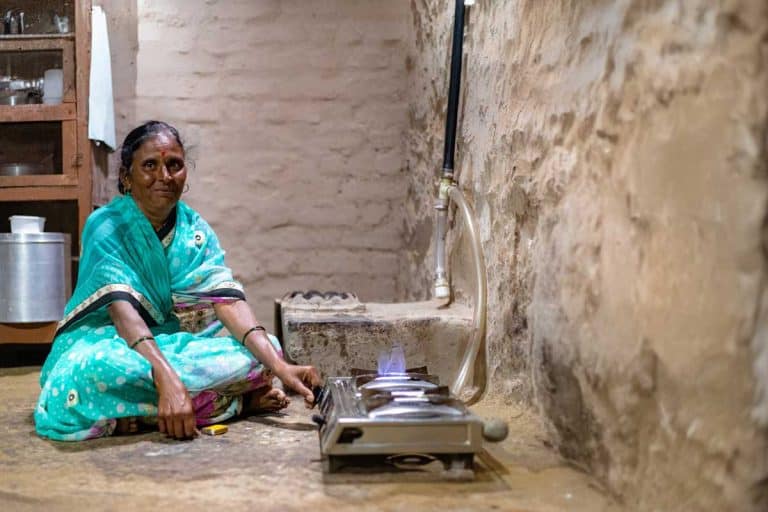
Phaltan, India
Using firewood was adversely affecting the health of the women in our family, and LPG was not easily available to us. We save approximately INR 1200 (US$14.50) a month on LPG. With the biogas, we can cook twice a day.
Sistema8
Biodigester size
Domestic
Farm type
5
No. Animals
Cow
Animal feedstock
9
People directly impacted
3-4
Daily average cooking time on one burner (h/day)
Cooking and water heating
Biogas usage
7
Potencial land fertilized with biofertilizer (ha/y)
Palghar, Maharashtra
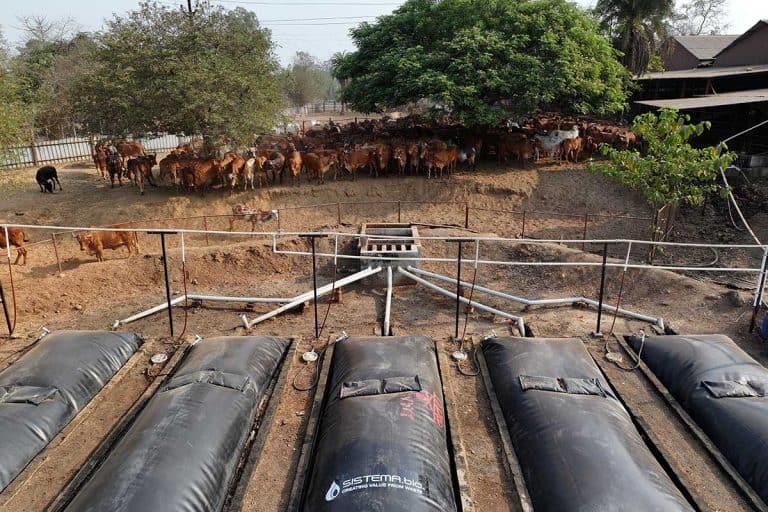
Palghar, Maharashtra
While electricity generation initially dominated my concerns, the game changer for me turned out to be biofertilizer. With my farm spanning 7 acres, including 1.5 acres of irrigated land, the introduction of biofertilizer significantly alleviated my reliance on chemical fertilizers.
Sistema200
Biodigester size
Agri Business
Farm type
300+
No. Animals
Cow
Animal feedstock
9
People directly impacted
25
Daily average cooking time on one burner (h/day)
Cooking and electricity generation
Biogas usage
38
Potencial land fertilized with biofertilizer (ha/y)
Kericho, Kenya
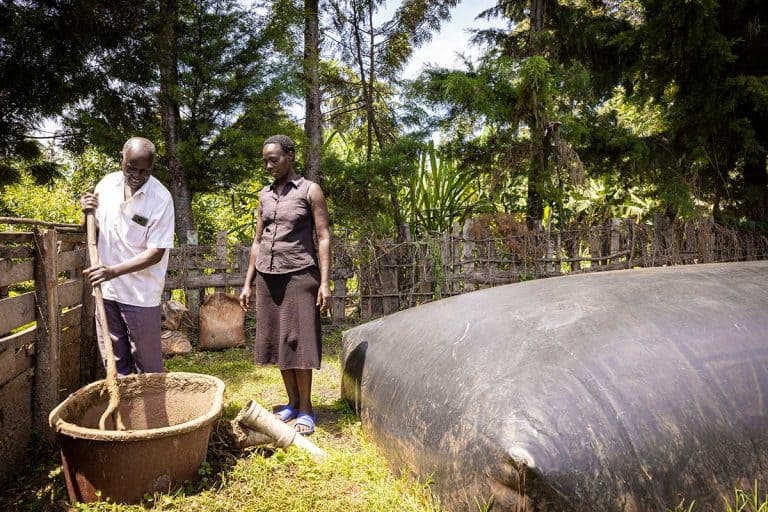
Kericho, Kenya
We use the system to cook and to heat water for milking, and we use the biofertilizer on our tea farm. We save a lot of money (10,000 KES ≈ $75 USD) and time, our compound is always clean, and my wife no longer has back issues.
Sistema16
Biodigester size
Domestic
Farm type
18
No. Animals
Cow
Animal feedstock
6
People directly impacted
4
Daily average cooking time on one burner (h/day)
Cooking and water heating
Biogas usage
11
Potencial land fertilized with biofertilizer (ha/y)
Ndeiya Akiwa Farm, Kenya
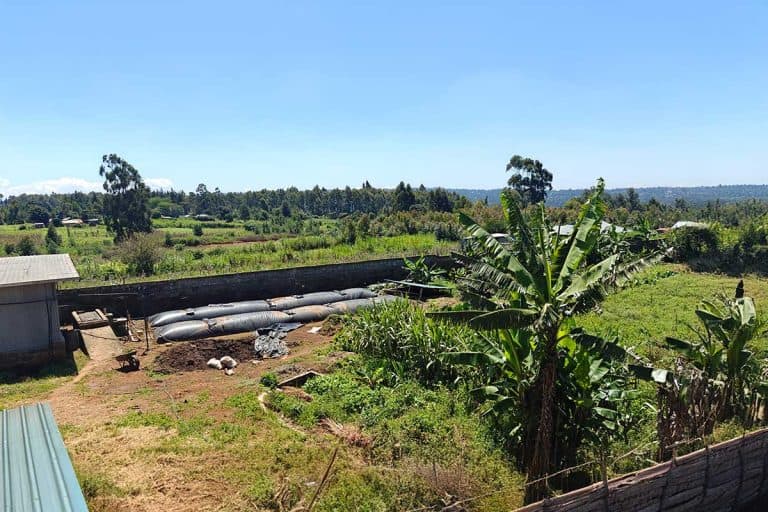
Ndeiya Akiwa Farm, Kenya
Mr. Gachanja uses biogas to run his farm machinery (milking machine, generator, water pump, water heater, chaff cutter). He also uses biofertilizer to increase yields. His farm is now a farmer training center for farmers from all over the country.
Sistema80
Biodigester size
Productive
Farm type
30
No. Animals
Cow
Animal feedstock
10+
People directly impacted
19
Daily average cooking time on one burner (h/day)
Electricity and power farm equipment
Biogas usage
58
Potencial land fertilized with biofertilizer (ha/y)
Cahuacán, Mexico
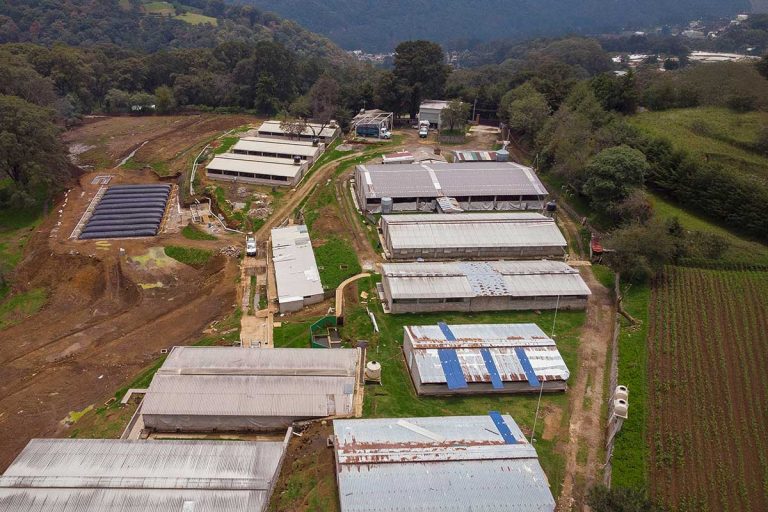
Cahuacán, Mexico
The main purpose is to manage waste and comply with local pollution regulations. The biogas is used as a source of heat to warm the maternity wings and keep the incinerator running 24/7. Moreover, the farm utilizes the water heater for showers, and the stove to cater to the daily needs of its employees.
Sistema400
Biodigester size
Productive
Farm type
300+
No. Animals
Swine
Animal feedstock
25+
People directly impacted
96+
Daily average cooking time on one burner (h/day)
Electricity and power farm equipment
Biogas usage
2.7
Waste treated (ton/day)
Cundinamarca, Colombia
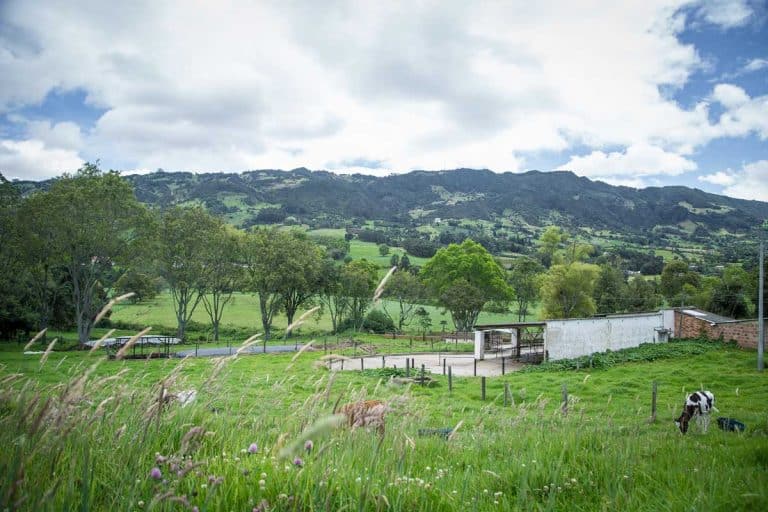
Cundinamarca, Colombia
The use of the water heater has resulted in significant energy savings. We save US$65.00 per month. Additionally, applying biofertilizers has improved grass productivity and resulted in healthier cows.
Sistema80
Biodigester size
Productive
Farm type
90
No. Animals
Cow
Animal feedstock
7
People directly impacted
12
Daily average cooking time on one burner (h/day)
Biofertilizer
Flyer
Biofertilizer
Series

2:28

3:59

3:21

2:42

2:57

3:21

3:34

4:07

1:45

2:57
Case Studies
Kenya
Frequently Asked
Questions (FAQs)
Before Purchase
Our biodigester prices vary based on reactor size and include a diagnostic package—determined by individual farm energy and fertilizer need assessment—installation, user training, reactor, stove, burner, and customer care services.
Sistema.bio provides financing, with eligibility criteria varying by region. For more information, please contact us.
A biodigester can effectively process waste from various animals such as pigs, sheep, rabbits, goats, and horses, but it performs better with cow and pig manure. Additionally, it can handle human waste and vegetable matter.
In temperate climates, the minimum quantity of manure needed is 36 liters, equivalent to waste from either 2 medium-sized cows or 5 pigs. However, this minimum requirement may vary in different climates.
The biodigester is made of linear low-density polyethylene (LLDPE) and under proper care and maintenance, the useful life of a biodigester is 20 to 25 years. Sistema.bio offers a 10-year warranty on the reactor.
No, although like any energy system, they entail risks if not handled properly. Our biodigesters are equipped with safety features like pressure relief valves and filters to mitigate potential dangers on farms or in backyard setups. Moreover, our technical team instructs users on essential safety precautions during installation. Adhering to our guidelines and performing regular maintenance ensures the safety of our biodigesters. For further information, please consult the user manual.
Biogas is indeed safe and does not pose a risk of explosion. However, like any energy source, it can cause burns if mishandled. It’s important to exercise caution when igniting and using biogas. For further information, please consult the user manual.
Cooking with biogas is sanitary as it does not harbor bacteria or emit odors. Pathogens are partially neutralized during the digestion process and are unlikely to pass through the biogas line. Moreover, any potential pathogens would be eliminated by the burner flame during cooking.
No, it’s not feasible. Biogas operates at atmospheric pressure and requires its own dedicated piping system to reach the burners and stoves. LPG installations have thinner and smaller diameter piping, making it challenging for biogas to pass through effectively. The Sistema.bio package includes its own stove and burner designed for use with biogas.
During Installation
Installation of small biodigesters like Sistema 6 to Sistema 20 typically occurs within a day, covering setup for the reactor, biogas line, and biogas cookstove. However, if excavation preparation is needed or soil conditions vary, the process might extend slightly longer.
The distance from the biodigester to the stove should be determined individually for each case:
- For small systems like Sis 6 and Sis 8, a maximum distance of 35 meters is recommended.
- For systems up to Sis 20, a maximum distance of 40 meters is recommended.
- For larger systems exceeding Sis 40 or involving multiple reactors, distances of up to 60 meters are feasible.
The amount of animal manure needed varies depending on the size of the biodigester, typically ranging from 20 to 70 buckets. For water, it’s recommended to fill 70% of the biodigester’s size, for example, a 12m3 biodigester would require 8,400 liters of water. Our technical team will provide guidance throughout the entire process.
Between 21 and 30 days in temperate climates. However, in extremely cold areas, it might take slightly longer.
We do not offer underground installation for biogas piping. Since underground piping is not visible, troubleshooting becomes challenging.
TroubleShooting
No, maintenance is straightforward and can be carried out by any adult without excessive effort. For further information, please consult the user manual.
Yes, the biodigester will resume its operation once you resume regular feeding. However, if there has been a pause in feeding, it’s recommended to agitate the biodigester vigorously to break up any scum that may have formed during the period of inactivity.
Biogas is a mixture of gases, with methane, the combustible component, making up around 40%. However, separating the gases and obtaining pure methane for packaging is a challenging and costly process.
There are various methods for applying biofertilizer, detailed in the user manual. Each standard Sistema.bio product includes a biofertilizer tank for temporary storage, typically lasting 5-7 days. To expand storage capacity, reach out to the local customer care team for guidance on excavating and installing an additional pit.
If you encounter any issues or have questions, please contact us. Our customer care service is readily available to assist you.
You can also find the contact details for your local customer care service on the back page of your user manual. Additionally, you can refer to the list of contacts provided below for further assistance.
Country/Region | |
Colombia | |
India | |
Kenya | |
Mexico | |
Uganda |